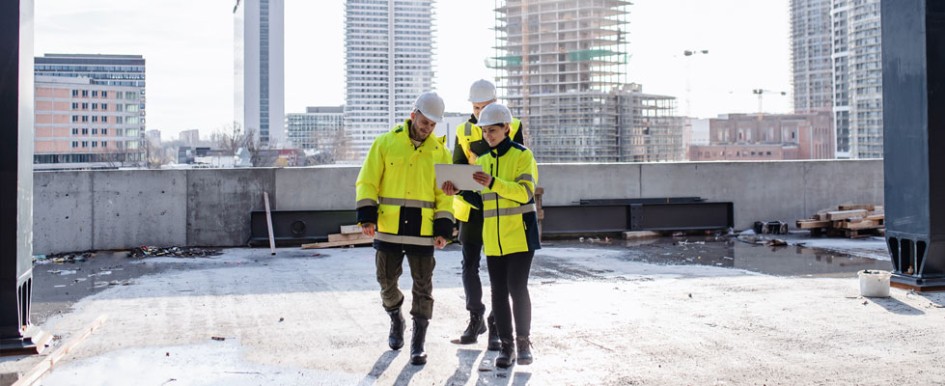
The still-evolving circumstances of the COVID-19 pandemic paired with construction’s already demanding work environment has the industry operating at the height of caution and risk management. Much of the more recent workplace safety risks have been centered on employees, with unprecedented safety measures being put in place on the jobsite and renewed efforts to monitor and mitigate health risks and exposure to the virus. But for business owners, now is as crucial a time as ever to assess some of the more familiar pillars of protection: insurance.
To get more on the topic, Construction Busines Owner (CBO) spoke with Gregg Lyon, chief strategy officer for bond construction services, strategic initiatives and product management at Travelers. Lyon has 30 years of experience in the surety industry, with 20 years in different surety underwriting roles at Travelers, and the last 10 years overseeing strategy for Travelers’ contract surety group, where he helps Travelers bring innovative solutions and value-added tools to contractors and agency partners, and find ways to help contractors run their businesses more effectively. Read on for a deep dive into one area of coverage — project loss insurance (PLI) — and what it offers to construction businesses.
CBO: What is project loss insurance, and why is it important to construction?
GL: PLI is designed to mitigate the risk of a sizable loss on a project that could lead to business impairment or worse. This coverage helps contractors emerge and recover from a major loss, rather than succumb to it.
This worst-case scenario is what prompted us to offer the product late last year. Out of 100 construction companies we studied that failed, we found the No. 1
reason for the failure is one job that becomes a catastrophic problem, for a variety of reasons.
About 60% of the contractors we evaluated were forced into a perilous financial position due to one job that resulted in a significant net loss, and many of them ultimately went out of business as a result.
Our more recent experience indicates that the number of contractors who failed due to one bad job has climbed into the 80% range. PLI is one way a business owner can protect their financial position and thus the longevity of their company.
CBO: How does PLI protect a construction company?
GL: PLI can protect contractors against risks that, until now, had been largely uninsurable. This insurance product helps cover major losses that occur as a result of poor decisions or performance, such as estimating, project execution, contract reviews, selecting a subcontractor, staffing and more. PLI can help cover issues that lead to a large job loss, granting coverage at the project level but also covering all of the jobs in a contractor’s backlog. However, the coverage is really designed to protect the enterprise by offering financial assistance when a large loss does occur, helping to mitigate what could otherwise be a catastrophic event.
CBO: Do you have any examples where PLI would have helped a contractor avoid being a surety loss?
GL: Yes, but I want to make clear that a contractor will still sustain a loss even if they have PLI. This is a risk-sharing product, where both contractor and insurance carrier absorb a percentage of the loss cost. One example I like to share involves a contractor who started a successful business more than 20 years ago. The firm took on a modest-sized job for $5.5 million, and due to a number of factors, including a bad superintendent and a challenging owner, the contractor ended up losing more than $3 million on the project. The firm’s equity dropped significantly, and the company was left with no liquidity to run the business. In addition, because the firm had to devote so many resources to finish the project, the remainder of its backlog was negatively affected. If PLI had been in place at limits consistent with a company of that size, the contractor’s loss would have been approximately $1.3 million, instead of more than $3 million. This would have had a much smaller effect on the balance sheet, putting the company in a better position to continue its operations. Additionally, the contractor could have filed for interim claim payments as the loss was being realized, to help with cash flow.
CBO: It’s nice to get the financial protection with the product, but what can a contractor do to avoid this type of situation in the first place?
GL: Another key finding from studying surety losses is that poor internal controls and processes can be a driving factor in a contractor’s failure. We found that 49% of the firms we reviewed had deficiencies in these two key areas that contributed to their demise. It’s critical that contractors review their capabilities around best practices. We have incorporated a review of these into our underwriting process, allowing our experienced underwriting professionals to assess and offer constructive feedback to businesses, which can help contractors find ways to improve these controls so they can avoid future problems.
CBO: What other thoughts Would you like to share with our readers?
GL: There’s one more point that might be valuable for construction firms. PLI is designed to offer balance sheet protection for a construction company; however, many business owners have a lot of their own personal net worth tied up in their companies. This product can help protect the corporate balance sheet, but in many instances, it also serves as overall wealth protection for business owners who have invested so heavily in their companies over the course of their careers. We’ve seen it too many times on the surety side — a contractor fails, and not only suffers the loss of their company, but also most, if not all, of their personal wealth.
